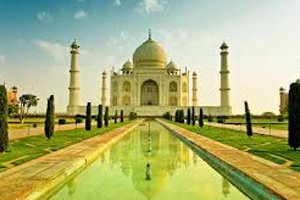
Indian Himalayas offer best trekking in Himalayan mountainous region and adventure holidays expedition to Indian Himalayas, Ladakh and Zanskar are the most popular trekking routes in Himalaya and the top ten trekking routes in Himalaya are Everest base camp in Himalaya, Poon hill, Annapurna base camp trek, Manaslu circuit trek, Makalu base camp trek, upper Mustang Trek, Gangotari Glacier trek, Zanskar frozen trek and Markha valley trek in Ladakh region are the best Himalayan trek and Himalayan adventure trek.
Himalaya tourism information: Himalaya tourism information provides Himalayas travel guide on Himalayan mountain ranges the Best places to visit in the Himalayan tourist destination region and major tourist attraction places are Agrahwal and Kumaon range leh Ladakh and Zanskar Range, Himachal Pradesh, Sikkim, Shimla, Darjeeling, Kulu-Manali, and Gantok are the most beautiful Himalayan tourist placesKey words—Trekking routes in Himalaya, Himalaya trekking package, Himalaya trekking for beginner, Himalayan trekking tour cost, Himalaya trekking tour, trekking in Himalaya, Trek the Himalaya, Himalaya trekking.
Himalayan tour package: Himalayan tour package offers adventure tour to ancient Buddhist Kingdom of Himalaya, Spirituality of life and Himalayan tourist destination.
India's history and culture is ancient and dynamic, spanning back to the beginning of human civilization. Beginning with a mysterious culture along the Indus River and in farming communities in the southern lands of India. The history of india is one puncuated by constant integration with migrating peoples and with the diverse cultures that surround India. Placed in the center of Asia, history in india is a crossroads of cultures from China to Europe, and the most significant Asian connection with the cultures of Africa.
India's history is more than just a set of unique developments in a definable process; it is, in many ways, a microcosm of human history itself, a diversity of cultures all impinging on a great people and being reforged into new, syncretic forms. IndHistory.com brings you the india's history starting from ancient history of india to modern indian history. Shown below is the india timeline starting from 3000 BC of ancient indus valley civilization and harappa civilization to 1000 AD of Chola Dynasty of ancient history of india.
In the fifth century, large parts of India were united under Ashoka. He also converted to Buddhism, and it is in his reign that Buddhism spread to o ther parts of Asia. It is in the reign of the Mauryas that Hinduism took the shape that fundamentally informs the religion down to the present day. Successor states were more fragmented.
Islam first came to India in the eighth century, and by the 11th century had firmly established itself in India as a political force; the North Indian dynasties of the Lodhis, Tughlaqs, and numerous others, whose remains are visible in Delhi and scattered elsewhere around North India, were finally succeeded by the Mughal empire, under which India once again achieved a large measure of political unity.
The European presence in India dates to the seventeenth century, and it is in the latter part of this century that the Mughal empire began to disintegrate, paving the way for regional states. In the contest for supremacy, the English emerged 'victors', their rule marked by the conquests at the battlefields of Plassey and Buxar.
The Rebellion of 1857-58, which sought to restore Indian supremacy, was crushed; and with the subsequent crowning of Victoria as Empress of India, the incorporation of India into the empire was complete. Successive campaigns had the effect of driving the British out of India in 1947.
Rajasthan:
Jaipur, the vibrant capital of Rajasthan, is popularly known as the ' Pink City ' because of the pink-coloured buildings in its old city. It sits on a dry lake bed in a somewhat arid landscape, surrounded by barren hills surmounted by forts and crenellated walls. This buzzing metropolis is certainly a place of wild contrasts and a feast for the eyes. Jaipur has massive forts, magnificent palaces, exquisite temples and marvellous gardens. All through, Jaipur has retained its strong Rajputana flavour tempered by several influences - the mughal being the most prominent. The region's strong cultural heritage is distinctly evident even today. The city is a visitor's delight. From the intricate, delicate looking Hawa Mahal to the graphic forms of the Jantar Mantar - an open air observatory of outsized astronomical instruments, the Badi Chaupar lined with shopsand business establishments on both sides to the majestic fort-palace at Amber; from the colorful fountains of life to the sublime Birla Temple; from the architectural delight of the City Palace to the serene Jal Mahal. The principal shopping centre in the old city is Johari Bazaar, The jewellers' market. Unlike most other shopping centres in narrow alleys in India and elsewhere in Asia, this one is broad and open. There are three main interconnecting roads in the new part of town - Mirza Ismail road (MI road), Station road and Sansar Chandra Marg.
Place to See
Amber Fort
High on the rugged hills outside of town sits ancient forts, including Amer (often called the Amber Fort), where the Jaipur royal house held court for seven centuries. Visitors ridding painted elephants can ascend to the fort to see magnificent gateways, courtyards, pavalions, and a gliterring chamber of inlaid mirrors
Hawa Mahal
Jaipur's most famous landmark is the Palace of the Winds or Hawa Mahal, a fantasia of 1953 ornate of windows set in a rose-colored five storey facade. The palace , tier upon tier of curved arch surmounting fairy casements with "jali", lattice work screens. From here the ladies of the court could look out at festive processions without jeopardizing their modest seclusion.
The City Palace
A pride of peacocks adorn an ornate doorway in Jaipur's City Palace. Palace retainers stand at attention as in the past when Jaipur Court was headquartered here. The palace is now a fine museum. It houses a remarkable collection of textiles, paintings, manuscripts, and extraordinary weapons. On display there are two huge urns of silver, said to be the largest silver vessels in the world. Nakkarkhana-ka-Darwaza, the imposing gateway of the City Palace guarded by stone elephants, is monumental.
Elephant Festivals
The elephant festival as the name implies, is their day. This festival is held just before the summer turns harsh, usually falling towards the end of March or early April. Rows and rows of elephants come parading on the grounds, run races, play tug of wars, and also the regal game of polo.
Agra:
Agra is a medieval city situated on the banks of the river Yamuna. It is generally accepted that Sultan Sikandar Lodi, the Ruler of Delhi Sultanate founded it in the year 1506. After the sultan's death the city passed on to his son Sultan Ibrahim Lodi. He ruled his Sultanate from Agra till he fell fighting to Babur in the First battle of Panipat fought in 1526. The golden age of Agra began with the Mughals. It remained the capital of the Mughal Empire under Emperor Akbar, Jahangir and Shah Jahan. Shah Jahan later shifted his capital to Shahjahanabad in the year 1649.
Since Agra was one of the most important cities under the Mughals, it witnessed a lot of building activity. Babar, the founder of the Mughal dynasty laid out the first formal Persian garden on the banks of river Yamuna. The garden is called the Aram Bagh or the Garden of Relaxation. His grandson Akbar raised the towering ramparts of the Great Red Fort besides making Agra a center for learning arts, commerce and religion. Akbar also built a new city on the outskirts of Agra called Fatehpur Sikri. This city was built in the form of a Mughal military camp in stone. His son Jahangir had a love of gardens and flora and fauna and laid many gardens inside the Red Fort or Laal Kila. Shah Jahan known for his keen interest in architecture gave Agra its most prized monument, The Taj Mahal. Built in loving memory of his wife Mumtaz Mahal, the mausoleum was completed in 1643.
Shah Jahan later shifted the capital to Delhi during his reign, but this son Aurangzeb shifted the capital back to Agra and had his father imprisoned in the Agra Fort. Agra remained capital of India during the rule of Aurangzeb till he shifted it to Aurangabad in the Deccan in 1653. After the decline of the Mughal Empire, the city came under the influence of Marathas and Jats before falling into the hands of The British Raj in 1803.
Taj Mahal
The Taj Mahal, the one and only one of its kind across the world. The monumental labour of love of a great ruler for his beloved queen. The ultimate realisation of Emperor Shahjahan's dream. One of the wonders of the world.
Agra Fort
Though Agra is more famous world over as the city of Taj, Agra Fort is another dimension to the city that attracts tourists.


